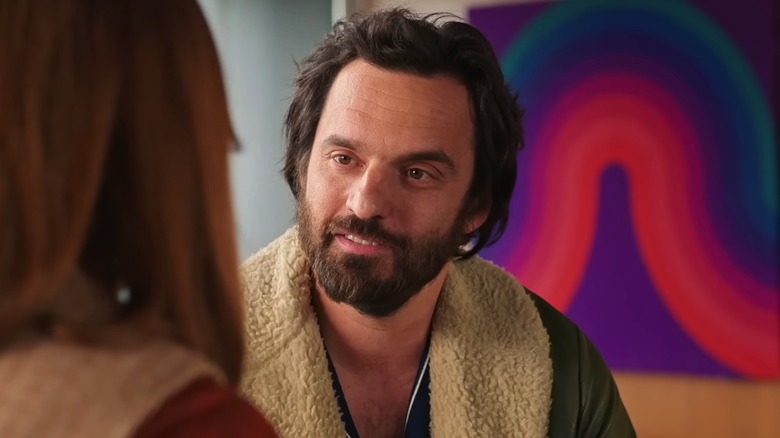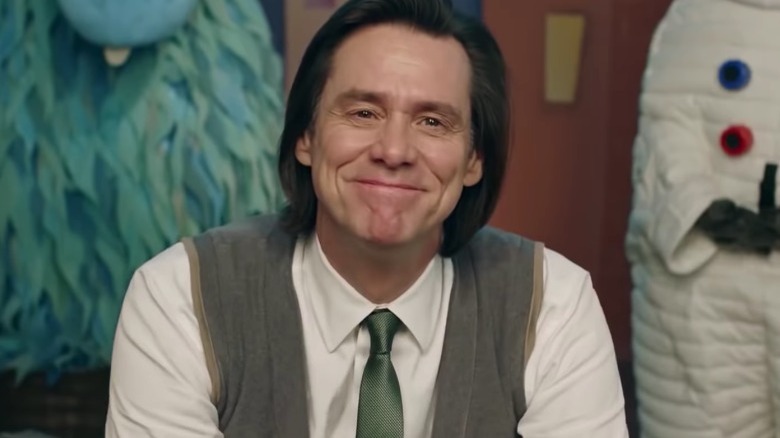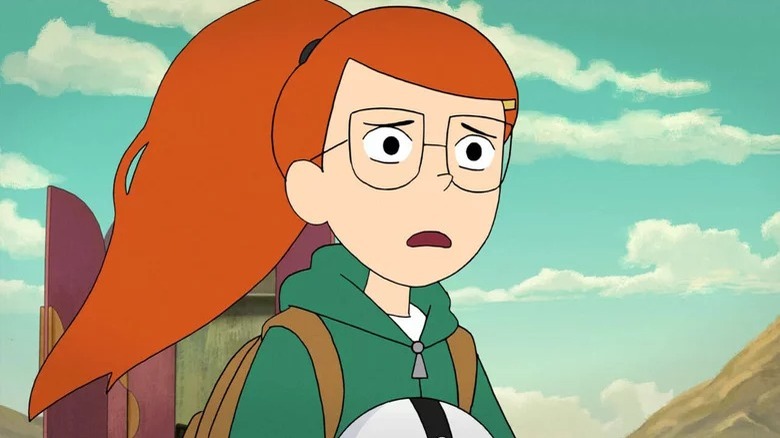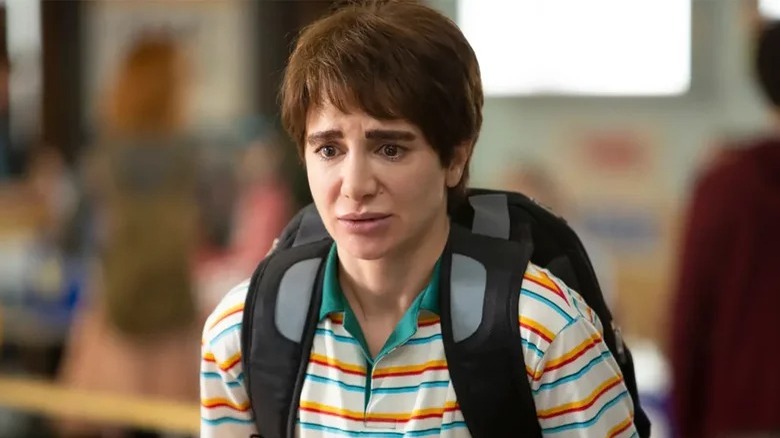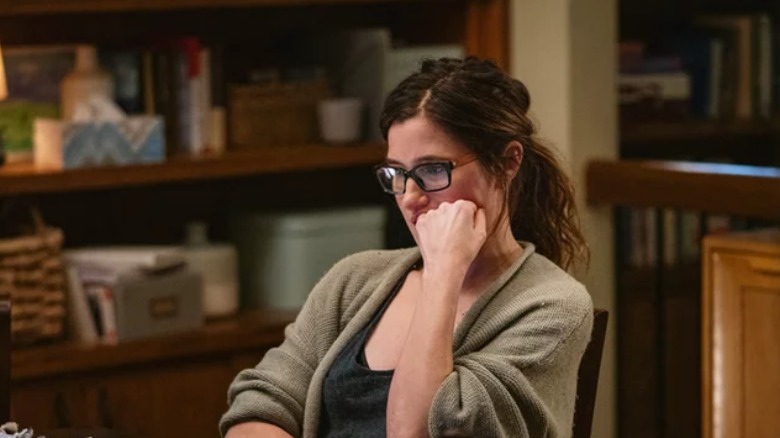In The Age Of Streaming, TV Preservation Matters More Than Ever
In August 2022, amidst a bevy of other cost-cutting but callous decisions, Warner Brothers Discovery began removing shows and movies from HBO Max that couldn't be found anywhere else. It wasn't subtle; dozens of titles disappeared across the course of the month, including "Vinyl," which was created by Martin Scorsese, "Mrs. Fletcher," starring Kathryn Hahn, and an inordinate amount of animated and kids' shows. The streamer didn't stop there, though. By December, one of its former flagship shows, "Westworld," was gone, along with a total of 80 other movies and series according to IndieWire.
Even as creators began speaking openly about the broken trust between artists and a powerhouse network that was once known for letting creativity thrive, other streamers were already following in HBO Max's footsteps. In September, news broke that the Eli Roth-produced series "Hemlock Grove," which stars Bill Skarsgård as a rich kid vampire, would be leaving the streamer despite being one of its earliest Originals. And in January, Starz and Showtime both got on board with this troubling trend, with shows including the Michel Gondry-directed Jim Carrey vehicle "Kidding" and the new "Dangerous Liaisons" also disappearing.
While it eventually became clear that some of these shows would reappear via licensing to smaller free streamers called FAST platforms — "Hemlock Grove" reportedly struck a deal with FilmRise, HBO Max's "Generation" landed on Tubi, and WBD has plans for its own FAST streamer — most of them haven't resurfaced, and it seems unlikely that they all will. Equally troubling, the industry-wide programming purge for the sake of tax write-offs and cost-cutting has also meant there are now whole seasons of TV being scrapped before they ever air. Showtime's "Three Women," starring Shailene Woodley, DeWanda Wise, and Betty Gilpin is the latest victim of this trend.
Canary, meet coal mine
Over the past year, the rug has been pulled out from under consumers and streaming creators, leaving artists, in particular, flat on their faces. As screenwriter C. Robert Cargill put it on Twitter when the news of the unceremonious cancelation of "Batgirl" broke, "Streamers have been selling us creatives on the virtues of platform exclusivity for some time now." He added, "The reason Hollywood is so shook by the HBO Max stories is that no one is sure whether this is an isolated incident or a canary in the coal mine."
It's clear now that it was, in fact, the canary. Since HBO Max kick-started the trend of canceling near-finished projects and (at least temporarily) erasing others from existence with a snap of their fingers, Thanos-style, many a commentator has called these practices "unprecedented." But unfortunately, the history of television is full of lost art, from its earliest days to the 21st century. So, considerable concerns about industry monopolies aside, why does this particular period of disappearing TV feel so harrowing?
The power of home video
To understand the current period of television, it's important to go back to the medium's earliest days. Experimental television began in the 1920s, but TV wasn't available for consumers until years later. Until "I Love Lucy" pioneered the idea of reruns in the 1950s, programs would broadcast once and then never again. Much early television, from variety shows to musical performances to scripted TV, was never recorded for posterity in the first place. When it finally was, in the early days of videotape, the expensive format was used by networks to record TV shows for a short time before wiping the tapes to use over again. "Television meant being live, over, and done with," BBC historian Richard Molesworth says in a report by Mental Floss. The BBC alone lost as much as 70% of its programming from the mid-'50s to the mid-'70s, mostly due to intentional deletion, according to the outlet.
Many of us know the disappearance of original programming feels wrong, for one simple reason: we lived through a time when we were able to save the shows we loved with just a videotape. With the advent of home video in the '80s and '90s, TV viewers became amateur archivists capable of saving any TV show that we felt was worthy of a blank tape and some storage space. Some TV shows started to gain official releases on home video, and others didn't, but viewers had the chance to legally and easily curate whatever they wanted. One woman in Philadelphia, for example, recorded 71,000 VHS and Betamax tapes over the course of 30 years. Home video recordings were bulky, grainy, and not built to last forever, but they leveled the playing field, allowing TV to feel more permanent than it ever had before.
The unspoken streaming trade-off
The dawn of streaming, which began in earnest when Netflix started cranking out original series in 2013, made home media largely obsolete for most Americans. Collectors and streaming skeptics still smartly extolled the virtues of buying your favorite show or movie on DVD or Blu-ray, sure, but that also quickly became an unrealistic expectation. After all, Netflix and other streamers almost immediately started making shows and films that they never released on physical media at all, a trend that continues to this day.
The unspoken expectation in this discreetly made deal with the devil was that if subscribers paid a monthly fee for a hub for all of our Netflix, HBO Max, or similarly branded favorites, we'd be able to pick them up and dust them off at any time like we would if they were on our own shelves. Home video recording died down, but DVD burning, which required more tech-savvy as well as a willingness to ignore stricter piracy laws, never caught on to the extent of its predecessor.
Netflix co-founder and former CEO Reed Hastings was pretty frank about his hope that subscribers would prioritize streaming way back in 2012, as a TechCrunch piece from the time quotes him as saying that "Profitability of each new streaming subscriber is almost twice what it is for DVDs." He continued, saying, "We'd obviously like them to do both, but if they're only going to use one, we'd much prefer they use streaming."
For a decade now, streaming has been the future, so all our shows went to streaming. But what's the future now, and where will TV go?
Here today, gone tomorrow
The failure to preserve art isn't okay just because it's happened before. There's something disorienting and alienating about the fact that viewers who once had the ability to act as at-home archivists now go to sleep one day unaware that their favorite show could disappear entirely the next. While the Criterion Collection increasingly incorporates streaming originals into their catalog, and now-vital conversations about piracy as preservation abound, companies continue to, as their memos so often put it, stop investing in titles that "underperform," which, somehow, often includes titles that haven't been released yet.
While HBO Max insists it's done with the slaughter, other streamers and networks have already picked up where they've left off, and creator trust has already been shattered. When news broke that the romantic anthology show "Love Life" would be leaving HBO Max, series creator Sam Boyd tweeted, "Bummed that this is now a thing that can happen! Gonna try to figure out somewhere else for it to live, so it doesn't just **not exist anymore**" Other showrunners and filmmakers echoed this sentiment, with "Dickinson" creator Alena Smith even revealing in a now-deleted tweet that she once had to beg for a single physical copy of her own series (which, luckily, is still available on Apple TV+).
'Chance determines what television programs survive'
In an article titled "Understanding the Preservation Challenge of Digital Television," authors quote a 1997 statement from the Library of Congress declaring that, "at present, chance determines what television programs survive. Future scholars will have to [rely] on incomplete evidence when they assess the achievements and failures of our culture." Over 25 years and multiple industry shake-ups later, it's a statement that seems truer than ever.
If there is an easy path forward for the legal, accessible preservation of television as an art form, it's clear that it doesn't lie in the hands of the viewers anymore. After a few decades that let us play home archivist, and another that taught us to dream of a digital TV world at our fingertips, that's a reality that's especially hard to accept — precedented or not. We shouldn't have to, either; technology is constantly evolving, and our ability to preserve visual media should be improving in the 21st century, not degrading.
Unfortunately, there's never been any promise that business ethics will evolve alongside technology. The second any art starts to be discussed as a tax write-off, no art is safe anymore. Watch your favorite shows today, because who knows where they'll be tomorrow?
